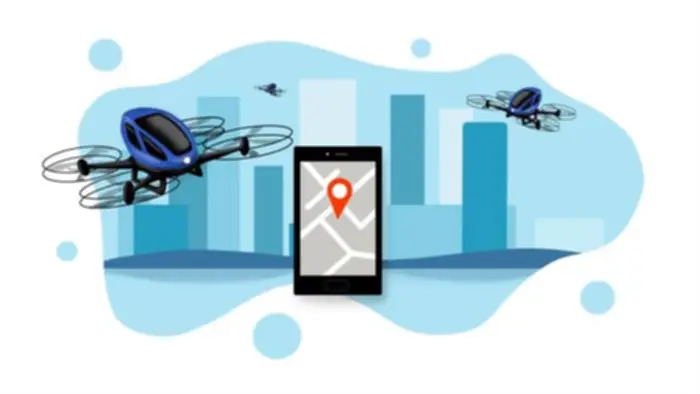Team Improvement: 4 Stages Every Team Experiences
The clashes in persona have resulted in larger intimacy and a spirit of cooperation emerges. Conscious of competitors, the staff begins to share a typical aim and at the moment are working “for” each other. Keep In Mind, whereas the top of a staff’s journey could really feel like a conclusion, it’s often just the beginning of new opportunities for development, collaboration, and innovation within your organization. You can facilitate an introductory group assembly with fun actions and games that assist staff members engage with each other and learn about one another.
These signs of cohesion don’t appear overnight but gradually emerge as the group works by way of its challenges and learns to understand each member’s strengths. Whereas the Adjourning stage signifies the tip of a project, it also presents a possibility to seize useful insights and classes realized for future endeavors. Group development talent applies to any group and accelerates excessive efficiency and success. In this stage, staff members also develop a way of commitment to the staff and its goals. This could be a period of adjustment for some staff members, as routines may be disrupted and new plans are made to tackle future work.
- Meanwhile, the scope of the work itself has began to reveal itself, and coworkers have begun to match their abilities to the place they’re most effective.
- In the formal operational stage, the web supplies an enormous useful resource for adolescents to explore abstract ideas and hypothetical situations.
- There are several stages that a staff must go through to be successful.
- Conscious of competitors, the group begins to share a standard goal and at the moment are working “for” each other.
- While it may appear to be mindless fun, this type of play is important for creating motor abilities and reinforcing the concept of trigger and effect.
Tuckman’s theory is that each group strikes via four phases on its method to changing into a high-performing team. By recognizing these phases, we can stages of team development adapt our leadership fashion to the wants of the staff. Bruce Tuckman’s 4 stages of team constructing are very important to establish the relationships, trust, understanding and coordination of roles and duties required for profitable efficiency. Educational psychology has seen numerous theories and fashions proposed to clarify how people learn and develop. Among probably the most influential is Jean Piaget’s concept of cognitive growth.
This final part of group building is the stage at which groups are actually engaged on the project itself or the on an everyday basis functioning of a group. This stage requires teams to be actively serving to and inspiring one another and holding teammates to account. Throughout the mission, Commander Sullivan continued to facilitate open communication and supply feedback. He trusted his staff and delegated duties successfully, focusing on overseeing the massive picture. They learned to speak successfully, to compromise, to understand each other’s different views. They started to develop common requirements for fixing problems and making decisions.
Organizational Efficiency Isn’t What You Assume (and The Means To Improve It)

Project administration performs a key function in navigating these challenges and fostering collaboration. We will discover effective team constructing and 5 Stages of Group Growth on this weblog. Constructing a group from the bottom up comes with its personal challenges and rewards, however figuring out the method it will develop can help you navigate the method. Tuckman’s four levels of team growth provide a framework to help you understand your team and more successfully reach your goals. Whereas engaged on a high-performing staff may be a really pleasurable and growthful experience, it isn’t the end of staff development. There is still a necessity for the group to focus on both course of and product, setting new targets as applicable.
As a group chief, it’s important to understand the totally different phases of group growth to lead the group successfully. In the forming stage, the chief must create a optimistic environment that encourages open communication and trust amongst group members. The leader must also set up clear objectives and goals for the group. Throughout the storming stage, the leader have to be patient and remain calm to assist the staff resolve conflicts. The leader should encourage group members to express their opinions and work towards discovering common ground.
Although many components play a job in a person’s alternative https://www.globalcloudteam.com/ to stay to a company, a fair percentage of employee retention is within the arms of a good manager. In Accordance to a Gallup survey, 42% of individuals that have voluntarily left their jobs, acknowledge that their manager could have accomplished something to stop it. This sense of freedom comes not solely from a supportive environment but also from the initiatives of the manager. It is the manager’s obligation to remind staff of these facts every so often. Conflicts may be an indicator that one or more of the aforementioned components of positive staff dynamics examples aren’t fairly right. One of the best ways to realize this is to set an example as a leader.
They may feel sadness or a sense of loss in regards to the changes coming to their group relationships. And at the same time, team members could feel a way of deep satisfaction on the accomplishments of the staff. Individual members might really feel all of these items on the similar time, or could cycle by way of feelings of loss adopted by emotions of satisfaction. Given these conflicting feelings, individual and staff morale might rise or fall throughout the ending stage.
The 5 Levels Of Team Improvement: Tuckman’s Model

The staff could discover that this is an appropriate time for an evaluation of staff processes and productivity. Resistance to assigned tasks and bristling at certain rules or strategies may occur. At this stage, members typically start to question the wisdom of the project at hand and even the aim of the staff itself.
Working Via The Forming Stage
After the storming stage, they acknowledge behavioural patterns, strengths and develop foresight for upcoming roadblocks. You method your staff to learn about their bottlenecks, roadblocks and considerations. You come to comprehend that, by involving your self, they’re burdened by a terror to talk up and would somewhat spend time rectifying the scenario. Whereas initially things had been going based on plan, roadblocks crop up during this stage.
Elevated job satisfaction is in direct correlation with improved team dynamics. If you’re aiming to make sure seamless collaboration and create a productive team, bettering team dynamics is one of the best ways to do it naturally. Now that we’re familiar with the examples, let’s have a glance at a few of the most notable benefits of improved team dynamics. This approach may also be utilized to the workplace — the proper one being the place where most employees attain the “self-actualization” stage. In the event of any miscommunication or comparable issues between teammates, you should strive to resolve conflicts quickly and in a way that makes everyone really feel heard.

Understanding this process is crucial for anybody concerned in group administration, management, or simply working as part of a bunch. The four phases of group development, first proposed by psychologist Bruce Tuckman in 1965, present a framework for understanding how teams evolve and mature over time. Throughout this stage, staff members start to perceive each other’s viewpoints. They start to appreciate each other’s strengths and work in direction of a common objective.
To succeed, transformation champions must navigate all 4 levels concurrently, ensuring that instruments, people, groups, and strategic objectives evolve together. This requires steady iteration, feedback loops, and leadership dedication at each stage. Many organizations introduce new instruments (L1) however struggle because Digital Logistics Solutions mindset shifts (L2) haven’t taken root. Others see people embracing change but fail to scale collaboration across teams (L3). With Out tying these efforts to a broader enterprise strategy (L4), transformation remains fragmented rather than a true competitive advantage.


0 Comentários